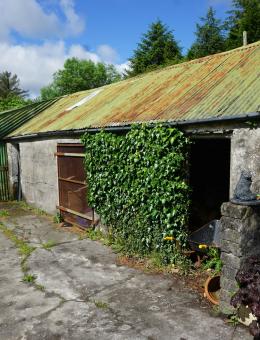
PROPOSED PERMITTED DEVELOPMENT RIGHTS CHANGES COULD BRING OPPORTUNITIES
Published 27 January 2024
Government consultations on proposed changes to legislation such as the Town and Country Planning (General Permitted Development) (England) Order 2015 can sometimes be so dry that they pass many people by. However, just such a consultative process which took place last year, and it threw up a number of potential opportunities for the agricultural sector.
The proposed changes have not yet been confirmed, but it is widely believed that they may come into effect before the general election.
The first opportunity comes around converting agricultural buildings to residential dwellings. Originally introduced in 2014, this was designed to encourage the development of smaller homes for rural workers. The existing order allows for up to five homes to be developed, but complex rules means that in practice four of these must be less than 100 square metres, and there is a limit to the overall area to be developed.
The proposed changes would allow for up to 10 homes of varying sizes up to a maximum of either 100 or 150 square metres to be delivered, increasing the overall limit to 1,000 square metres. The net effect would be to incentivise the delivery of more modest homes and remove the ability to build much bigger ones (currently a single large home of 465 square metres is possible within the order).
Currently, PDR does not allow for any increase to the external dimensions of the original building when converting from agricultural to residential use. The new proposals would allow an extension of up to four metres in depth, provided this was on land which had already been developed, such as an area covered by a hard surface.
The proposals also include allowing former (rather than current) agricultural buildings to be included in PDR, provided the building’s last use was agricultural – for example a barn located outside a village which is no longer part of a working farm, but which has not been used for any other purpose in the meantime.
It is possible that the changes will allow buildings which are not strictly in agricultural use (such as those in forestry or equestrian use) to fall within the PDR rules.
Finally, there is a proposal to allow agricultural buildings in conservation areas, AONBs, National Parks (including the Broads) and World Heritage Sites – which are currently excluded from PDR – to be included.
We don’t yet know what the final changes will be, but they will in all likelihood present the agricultural sector with good opportunities to develop under-used redundant buildings to deliver much-needed rural homes in the county.
Share this story
Arnolds Keys Blog

2024: PROPERTY FUNDAMENTALS WILL OVERCOME THE UNCERTAINTY
24 January 2024
January is traditionally a time for looking ahead, but as I said in this column 12 months ago, making predictions is a dangerous pastime at the best of times, writes... Read more >

IT’S WINTER, FIRE UP THE BOILER. BUT IS IT SAFE?
19 January 2024
Winter has finally arrived in Norfolk this week, with the mercury hitting negative territory, and tenants everywhere are firing up their central heating and gas fires in an attempt to... Read more >

A WELCOME JANUARY CONFIDENCE BOOST
12 January 2024
Less than two weeks into the new year, and already we are seeing a more confident property market than in recent months, writes Sue Hall. Read more >
BRAND NEW HIGH SPECIFICATION INDUSTRIAL UNIT ON COBHOLM BUSINESS PARK COMES TO MARKET
2 January 2024
A brand new, high specification industrial unit on Cobholm Business Park in Great Yarmouth has been launched onto the market – part of a high-tech business park with views over... Read more >
